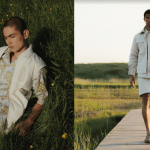The fashion industry’s outlook has never been so uncertain, as geopolitical upheaval, climate challenges and nagging inflation keep markets unsteady.
The new challenges in a post-covid climate directly impact consumer confidence, as highlighted in The State of Fashion 2024 report, a collaborative effort by McKinsey & Company and Business of Fashion (BoF)
The report outlines ten key focus areas for the fashion industry in the upcoming year, drawing insights from two global surveys involving fashion executives and consumers. Industry experts are divided in their expectations for the next year, with 26 percent anticipating improvement, 37 percent foreseeing status quo, and 38 percent predicting worsening conditions. The forecast for industry growth is modest at 2 to 4 percent, with potential positive factors including a rebound in global tourism to levels 10 percent above those in 2019 and opportunities arising from generative artificial intelligence (gen AI).
As for consumers, they can expect price increases in both luxury and non-luxury items, with some executives stating a surge of up to 5 percent cannot be avoided.
Next Gen AI
Gen AI gained significant momentum in 2023, with 14.1 billion dollars in funding for AI-focused startups in the first half of the year alone. Approximately 25 percent of gen AI’s potential value in the fashion industry is attributed to its application in design and product development. Already AI algorithms are being used by many companies to analyse user preferences and behaviour, providing personalised product recommendations. But its technical applications can help designers develop better products, such as predictive bestsellers, as well as saving time for marketeers and content creators.
AI is on the executive to-do list
Despite high expectations, fashion executives acknowledge a substantial knowledge and talent gap in their organizations related to gen AI. While 73 percent consider gen AI a priority in 2024, only 28 percent have experimented with its use in creative processes, and just 5 percent believe their employees possess the necessary skills.
International travelers are boosting spending
Global tourism is expected to surpass pre-pandemic levels in 2024, providing a lucrative opportunity for some fashion brands. Surveyed consumers from the US, UK, and China express a strong intention to shop for fashion while on holiday, with 28 percent planning to spend more on fashion shopping during travel than the previous year. Additionally, there is a shift in consumer behaviour towards adding second-tier cities to their itineraries, with over half expecting to explore new destinations. Fashion executives are advised to adapt global strategies to capitalize on this travel rebound.
On the eve of COP28, the climate crisis poses a significant risk to the fashion industry, with extreme weather events predicted to jeopardize 65 billion dollars worth of apparel exports and threaten one million jobs in four major economies by 2030. Sustainability is identified as a key challenge, with new rules in Europe and the US requiring brands to intensify efforts to reduce emissions and waste while embedding climate strategies across their businesses. Despite this, only 12 percent of executives see sustainability as a principal opportunity for 2024.
Big versus small
When it comes to the world’s leading brands, the big players like LVMH, Inditex, Nike and Kering will continue to see profits soar, whereas smaller business may feel greater challenges in weathering storms, be it where geopolitical tensions, trade wars, and global economic uncertainties can lead to disruptions in their supply chains and services. Smaller fashion companies often have limited resources and may struggle to quickly adapt to changes in production, sourcing, and distribution, impacting their ability to meet consumer demands.
Competition among fast-fashion brands is expected to intensify in the year ahead, says the report. Success for both new and incumbent players will hinge on their ability to adapt to customer tastes and navigate new regulations that will impact the industry. 40 percent of US consumers have shopped at 3rd generation fast fashion in the last 12 months.
In the realm of influencer marketing, which is currently valued at 21.1 billion dollars, there is evidence of “influencer fatigue” among consumers. The report reveals dissatisfaction with the amount of sponsored content on social platforms, with 68 percent of surveyed consumers expressing unhappiness. A new trend for 2024 emphasizes authenticity over status, with consumers favoring influencers who embody relatability (43 percent) and authenticity (40 percent) rather than a polished, aspirational lifestyle. Brands are responding by diversifying the types of talent they partner with.
Furthermore, changes in lifestyle has seen consumers take to the outdoors, foregoing trend-led fashion for utilitarian pieces with functional qualities over high design.
In conclusion, the fashion industry faces a complex landscape in 2024, with challenges ranging from the transformative potential of AI to the impact of climate change. Fashion leaders are urged to approach the year with caution while actively seeking targeted opportunities for growth and innovation.



